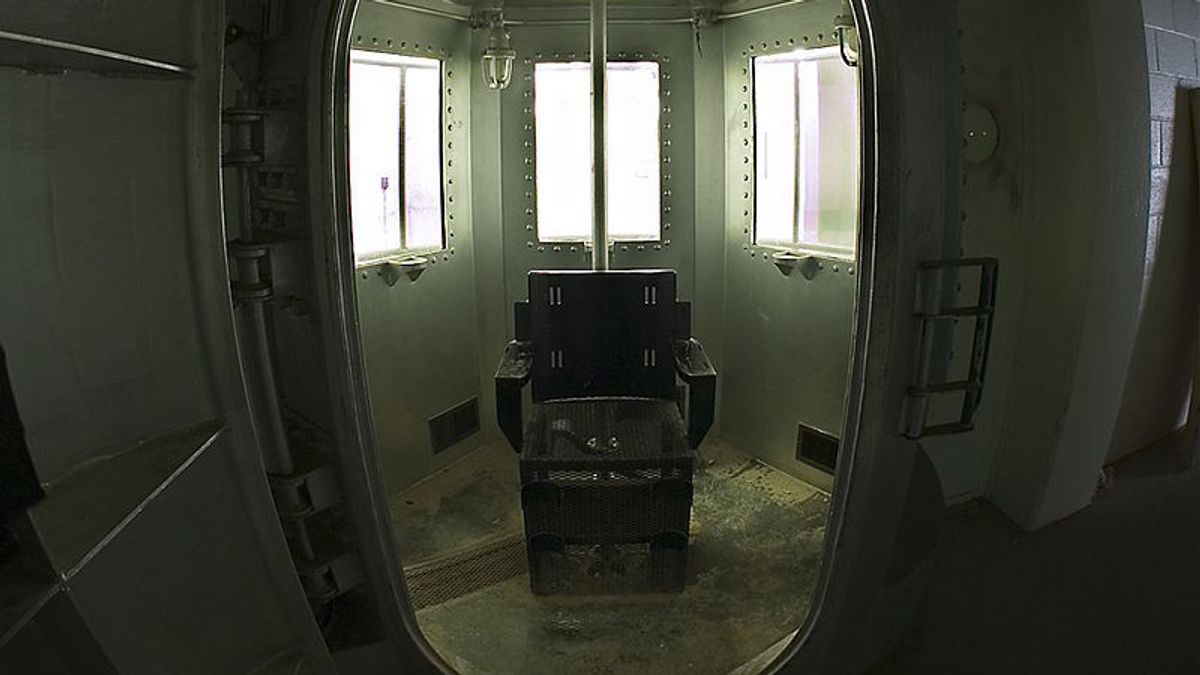JAKARTA - On February 8, 1924, for the first time the death sentence by using a poison gas chamber was carried out. The sentence was adopted in the State of the United States (US), to be precise in Nevada since 1921. The aim was to provide a more humane death penalty.
Quoting Britannica, Monday, February 8, Gee Jon was the first person to be executed in a poison gas chamber. In 1955, eleven states adopted gas chambers as a method of execution.
However, in the early 21st century gas chambers only existed in two states, namely California and Missouri. In both states, prisoners sentenced to death are given the choice of what way to die: lethal injection or gas chambers.
In Arizona, inmates sentenced to death before November 1992 were allowed to choose between lethal injection or lethal gas. In Wyoming, lethal gas is prescribed to replace lethal injection if the latter method is declared unconstitutional.
From 1921 to 1972, when the US Supreme Court initiated a moratorium on the death penalty, poison gas chamber executions have counted toward six hundred executions. From 1976 to 1999, when the moratorium ended, eleven executions were recorded.
The high cost of renovating gas chambers and a growing perception of the method as a cruel method led some scholars to predict that by the beginning of the 21st century, it would no longer be used.
Poison gas chamber death penalty method
The lethal gas chamber procedure in California is performed in a modified and sealed octagonal chamber. Prisoners are tied to chairs with holes.
Underneath is placed a container filled with sulfuric acid, distilled water, and sodium cyanide crystals. The executioner pulled a lever that mixed cyanide crystals into a container of sulfuric acid water to create hydrocyanic gas which the inmates later inhaled.
While there is agreement that cyanide affects many parts of the body, it is unclear at what point a person becomes unconscious or dies. Pain and awareness are said to be so difficult to measure.
In 1996, the federal appeals court unanimously declared a California law authorizing lethal gas in violation of the US Constitution's Eighth Amendment ban. The punishment was considered cruel and unusual.
The assessment is based on the findings of a lower-level court that inmates who inhale poison gas can suffer excruciating pain. In addition there is also a high chance that the pain will last for several minutes.
The world is also responding. The United Nations (UN) Human Rights Committee finds the California gas chamber method torturous and inhuman.
The Nazis used to kill JewsOutside the US, no other country has adopted lethal gas chambers as a constitutional method of carrying out the death penalty. However, during the Holocaust, Nazi Germany used gas chambers to kill Jews and other target groups.
Citing auschwitz.org, there are trucks carrying people who are too weak to walk. The rest, line up. The people had to take off their clothes before entering the gas chamber. In room I, they undress in a courtyard surrounded by walls or in the front room.

There is a special room for undressing in room II-V. When a large number of shuttles arrived in 1944, those to be executed in room V also took off their clothes in the open. After that they were placed in the changing room in room IV.
Those who are forced to die do not realize what awaits them. They were told that they would be sent to a camp, but had to undergo disinfection and shower first. After the victims removed their clothes, they were taken to the gas chambers, locked up, and gassed with Zyklon B.
After being killed, the bodies were dragged out of the gas chambers. For female corpses, their hair was cut and all teeth and metal jewelry removed. Then, the bodies were burned in pits, with firewood or in crematorium furnaces.
The bones that were not completely burned were ground into powder with a pestle, which was then dumped with the ashes of those who were executed in various places, such as the Soła and Vistula Rivers, in nearby ponds or scattered in the fields as fertilizer. Some are dumped in landfills on uneven ground and in marshes.
The English, Chinese, Japanese, Arabic, and French versions are automatically generated by the AI. So there may still be inaccuracies in translating, please always see Indonesian as our main language. (system supported by DigitalSiber.id)









